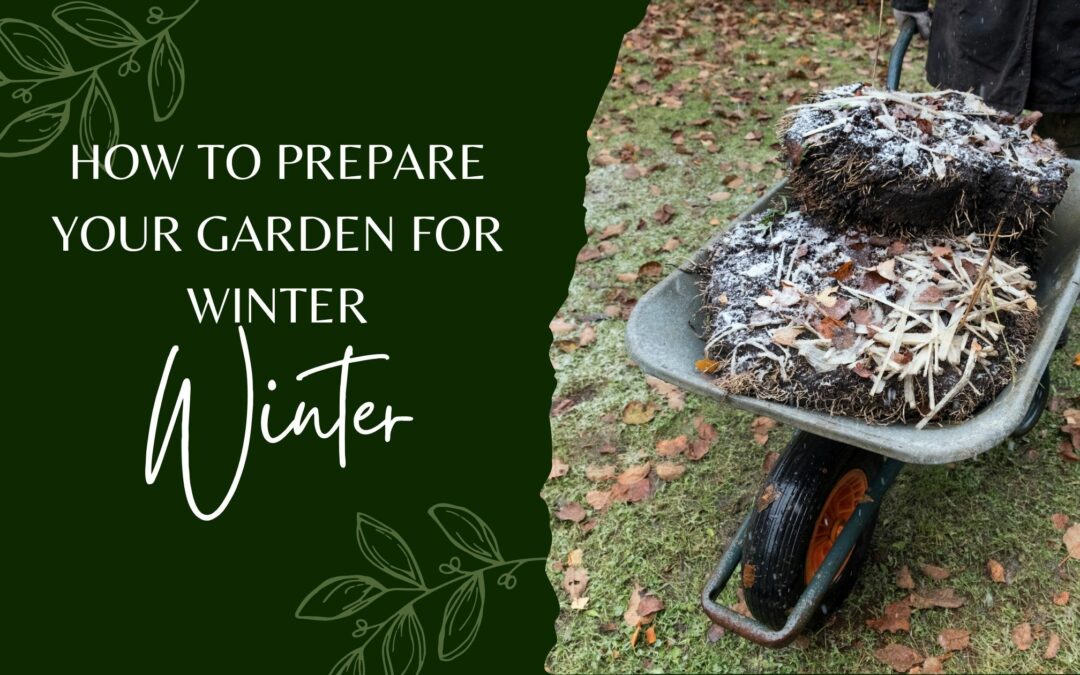After the rush of spring planting and the peak of summer’s harvest, it’s tempting to shut the garden gate and let nature take its course. After all, you’ve done the heavy spring lifting and reaped summer’s benefits. What do we do to prepare our beautiful gardens for winter?
The answer depends on how much easier you’d like things to be when spring rolls around. A few careful steps executed now will save you effort in the long run. If you would like to reduce the amount of work facing you during next year’s spring frenzy, consider some of these suggestions for putting your garden to bed.
Clean up diseased plants. Leave the rest in place.
While many spent plants can be left in place to rot and add nutrients to the soil, some may harbor disease, pests and funguses. If you noticed any signs of disease during the growing season but didn’t have the time to act, now is the time to remove them. The rest of your spent crops will provide protection for the soil, reducing erosion if left in place through the winter. They can also provide homes for overwintering pollinators.
Remove invasive weeds that may have taken hold over the growing season.
Remember the bindweed that colonized your raspberry patch? Or the Himalayan blackberry encroaching from your garden’s borders? Now is the time to deal with those renegades. Dig them up and place them in the trash or smother them underneath tarps or garden cloth. Most invasive weeds remain viable in a compost heap or weed pile, so resist the urge to simply shift them to another part of your garden. Removing invasive plants completely is the only way to prevent those plants from sprouting all over again and disrupting next year’s crop.
Amend your soil for spring
Despite the fact that most people reserve this activity for spring, fall is a great time to add soil amendments like manure and compost, or organic fertilizers such as bone meal, kelp and rock phosphate. In most climates, adding nutrients at this time of year means they have time to start breaking down, enriching your soil, and becoming biologically active. Amending soil now also means you’ll have already done some of the work when the busy season hits. Once you’ve sprinkled on your amendments, you can mulch your soil or sow a cover crop to prevent winter rains from washing the amendments below the active root zone; this applies especially to raised beds since they drain more readily than in-ground beds. Remove the mulch in early spring in advance of new planting.
Plant cover crops
In many climates, late summer or early fall is a good time to sow cover crops like rye, vetch or clover. These crops help prevent soil erosion, break up compacted areas and increase levels of organic matter in garden beds. Cover crops also add nutrients and help your soil draw carbon into the soil from the atmosphere. Planting legumes in your garden such as clover or field peas can increase the levels of available nitrogen for garden vegetables. While a general guideline is to plant cover crops approximately one month before your first killing frost, some cover crops are harder than others. Consult your local extension agent or seed provider to identify the best fall cover crop for your region.
Prune perennials with care
Fall is a good time to trim some perennial garden plants, though take care to ensure you choose the right ones. Although plants like fennel benefit from a fall pruning, research shows that spent raspberry canes continue to nourish the plant’s crown into the winter. Blueberries also prefer a spring pruning, which helps safeguard the plant from exposure to disease and stress. Focus fall pruning efforts on flowers like roses; herbs like rosemary, thyme and sage; and vegetables like asparagus and rhubarb. Blackberries also benefit from a fall clean up. Remove spent or crossing canes to help control the plant’s vigorous spread.
Divide and plant bulbs
Although spring bulbs have long since flowered and died back, other flowering bulbs like lilies bloomed more recently. Three to four weeks after that glorious display, it’s time to dig up and divide any plants that appeared crowded or straggly during the growing season. For spring bulbs, this might mean some guesswork to determine location. Other plants will be more obvious. Dig 4-8 inches away from the plant’s growing stalk, carefully loosening the soil. Lift bulbs gently and separate bulblets for immediate transplanting elsewhere in the garden.
Harvest and regenerate your compost
Now that the heat of summer is over and nature’s microbes are settling in for their winter’s nap, you may be tempted to ignore your compost heap. This would be a missed opportunity in two ways. First, material composted over the summer is probably finished and ready to go. Using this rich material to top up garden beds, amend deficient soils or fertilize lawns and landscaping will nourish your soil and jumpstart growth come springtime.
Replenish mulch
Mulching in winter has many of the same benefits as summer mulching. These include reducing water loss, protecting the soil from erosion and inhibiting weeds. But winter mulching has other benefits as well: as the soil transitions to colder weather, the freezing and thawing of the earth can adversely affect garden plants, whose roots suffer from all that churning and heaving. Adding a thick layer of mulch to the soil surface helps regulate soil temperatures and moisture and ease the transition into winter. A thick layer of mulch around root vegetables left in the garden for your fall and winter harvest can also buffer against hard frosts and prolong your crop. And as the mulch breaks down it incorporates fresh organic material into your soil.
Get a QuoteMore Great Garden Resources
- What is a Garden Home?
- 10 Essential December Landscaping and Gardening Tasks
- 3 Tips on Adding a Window Garden to Your Home
- 3 Easy Ways to Update Your Garden Space Without Spending a Fortune
- Organizing Your Lawn/Garden Tools For Seasonal Storage
- April Landscaping and Gardening Tasks for the Pacific Northwest
- 10 Useful Tasks for Your Garden in March
- Landscaping Service for HOA Communities
- For Purposes of Improving Landscape Water Use and Irrigation Efficiency

